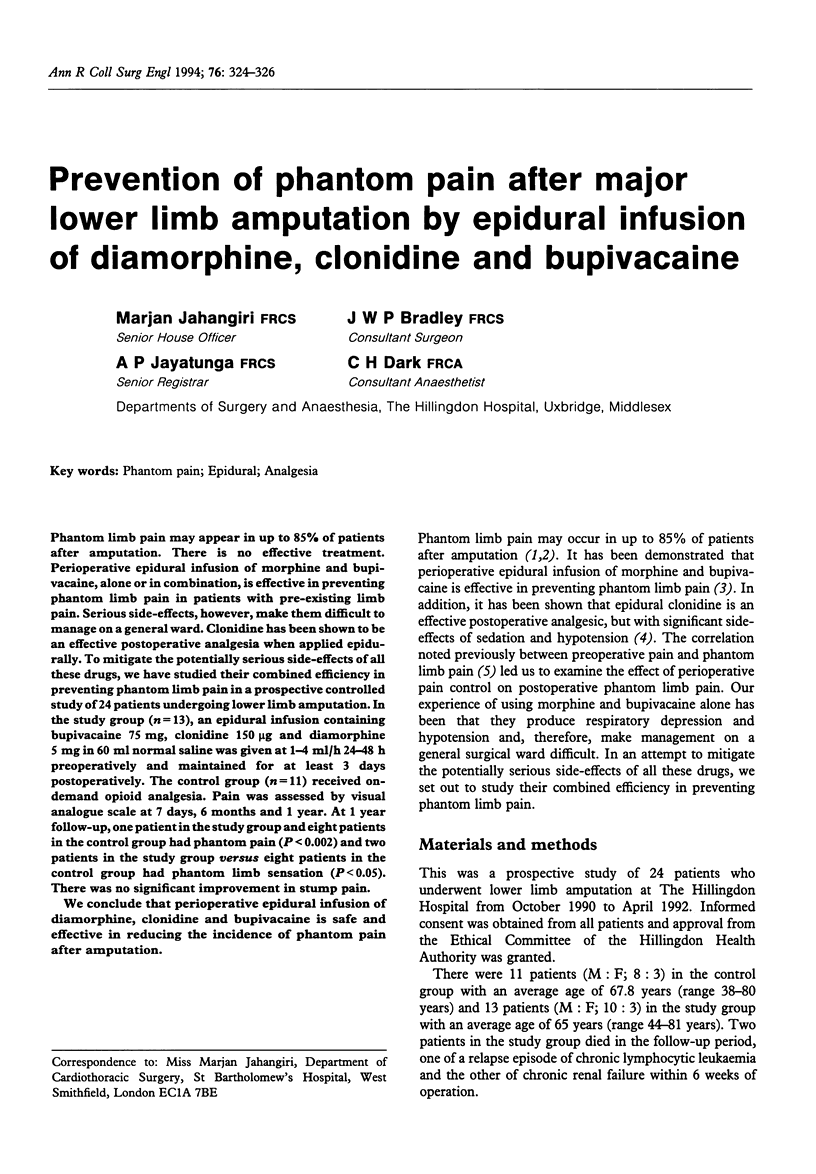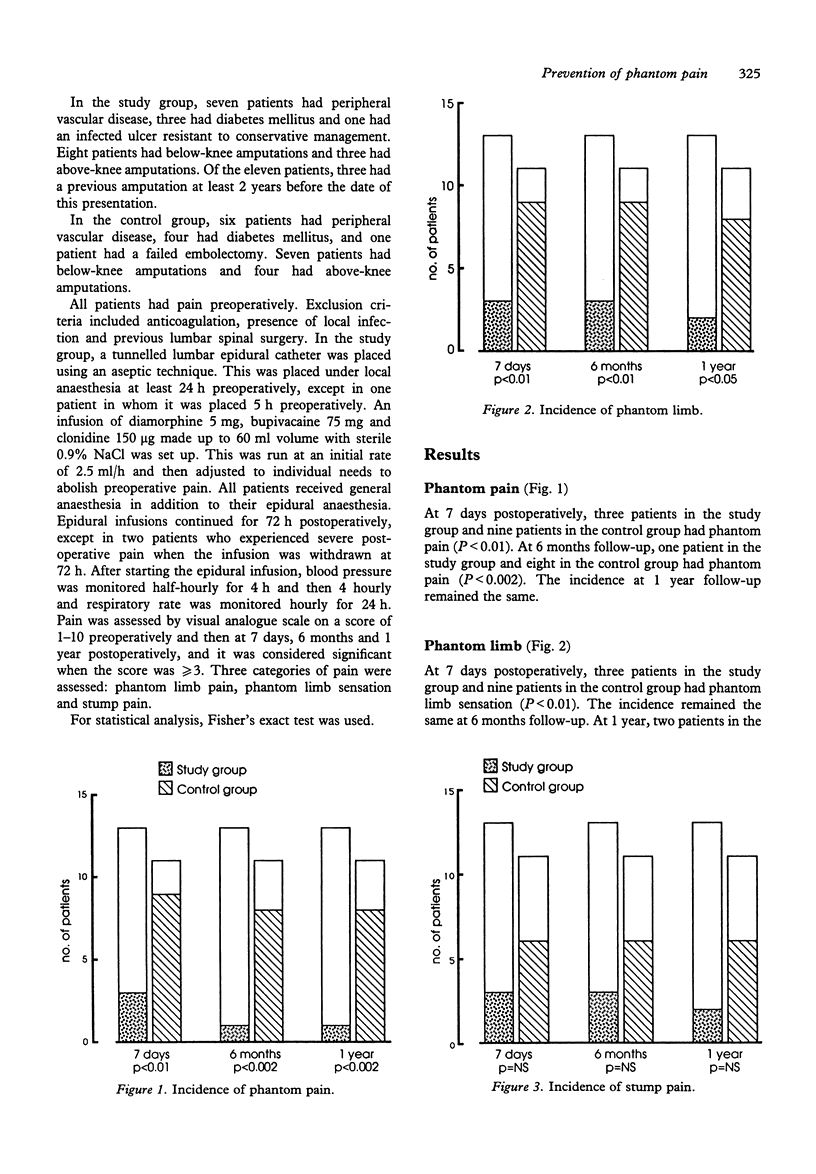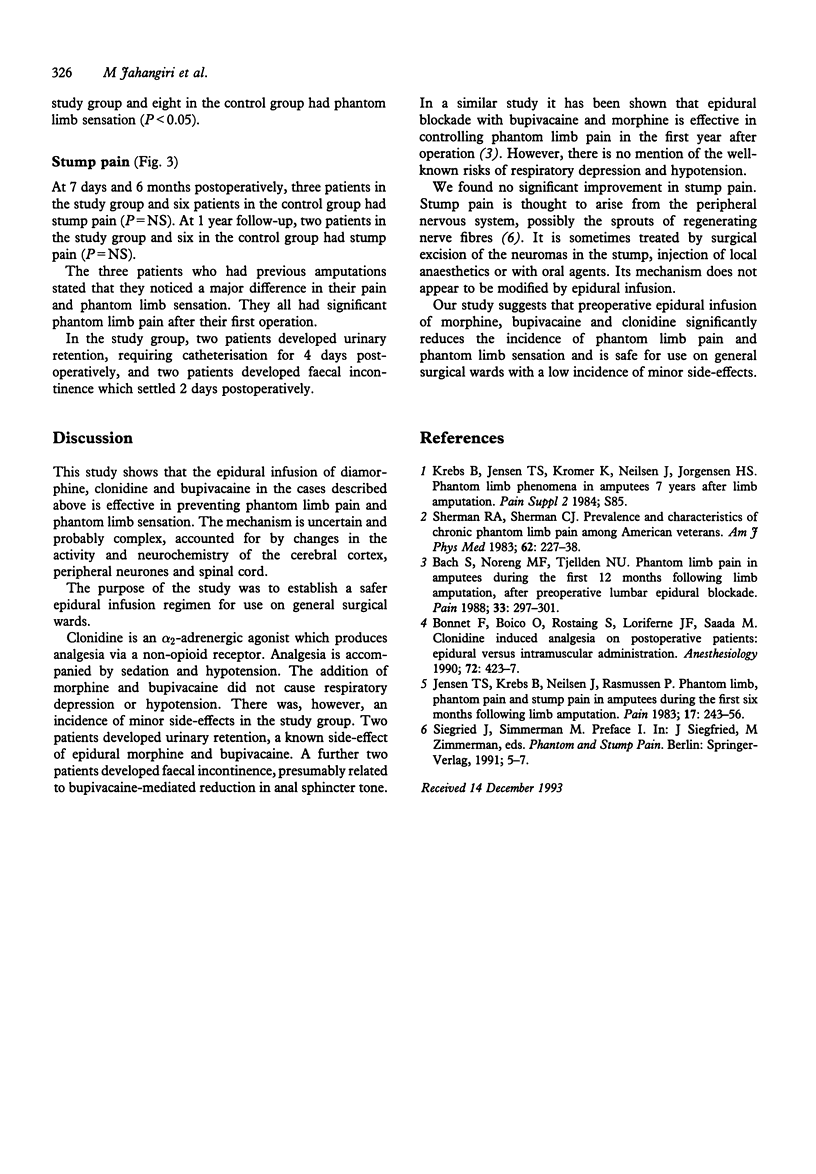Abstract
Phantom limb pain may appear in up to 85% of patients after amputation. There is no effective treatment. Perioperative epidural infusion of morphine and bupivacaine, alone or in combination, is effective in preventing phantom limb pain in patients with pre-existing limb pain. Serious side-effects, however, make them difficult to manage on a general ward. Clonidine has been shown to be an effective postoperative analgesia when applied epidurally. To mitigate the potentially serious side-effects of all these drugs, we have studied their combined efficiency in preventing phantom limb pain in a prospective controlled study of 24 patients undergoing lower limb amputation. In the study group (n = 13), an epidural infusion containing bupivacaine 75 mg, clonidine 150 micrograms and diamorphine 5 mg in 60 ml normal saline was given at 1-4 ml/h 24-48 h preoperatively and maintained for at least 3 days postoperatively. The control group (n = 11) received on-demand opioid analgesia. Pain was assessed by visual analogue scale at 7 days, 6 months and 1 year. At 1 year follow-up, one patient in the study group and eight patients in the control group had phantom pain (P < 0.002) and two patients in the study group versus eight patients in the control group had phantom limb sensation (P < 0.05). There was no significant improvement in stump pain. We conclude that perioperative epidural infusion of diamorphine, clonidine and bupivacaine is safe and effective in reducing the incidence of phantom pain after amputation.
Full text
PDF


Selected References
These references are in PubMed. This may not be the complete list of references from this article.
- Bach S., Noreng M. F., Tjéllden N. U. Phantom limb pain in amputees during the first 12 months following limb amputation, after preoperative lumbar epidural blockade. Pain. 1988 Jun;33(3):297–301. doi: 10.1016/0304-3959(88)90288-6. [DOI] [PubMed] [Google Scholar]
- Bonnet F., Boico O., Rostaing S., Loriferne J. F., Saada M. Clonidine-induced analgesia in postoperative patients: epidural versus intramuscular administration. Anesthesiology. 1990 Mar;72(3):423–427. doi: 10.1097/00000542-199003000-00004. [DOI] [PubMed] [Google Scholar]
- Jensen T. S., Krebs B., Nielsen J., Rasmussen P. Phantom limb, phantom pain and stump pain in amputees during the first 6 months following limb amputation. Pain. 1983 Nov;17(3):243–256. doi: 10.1016/0304-3959(83)90097-0. [DOI] [PubMed] [Google Scholar]
- Sherman R. A., Sherman C. J. Prevalence and characteristics of chronic phantom limb pain among American veterans. Results of a trial survey. Am J Phys Med. 1983 Oct;62(5):227–238. [PubMed] [Google Scholar]


